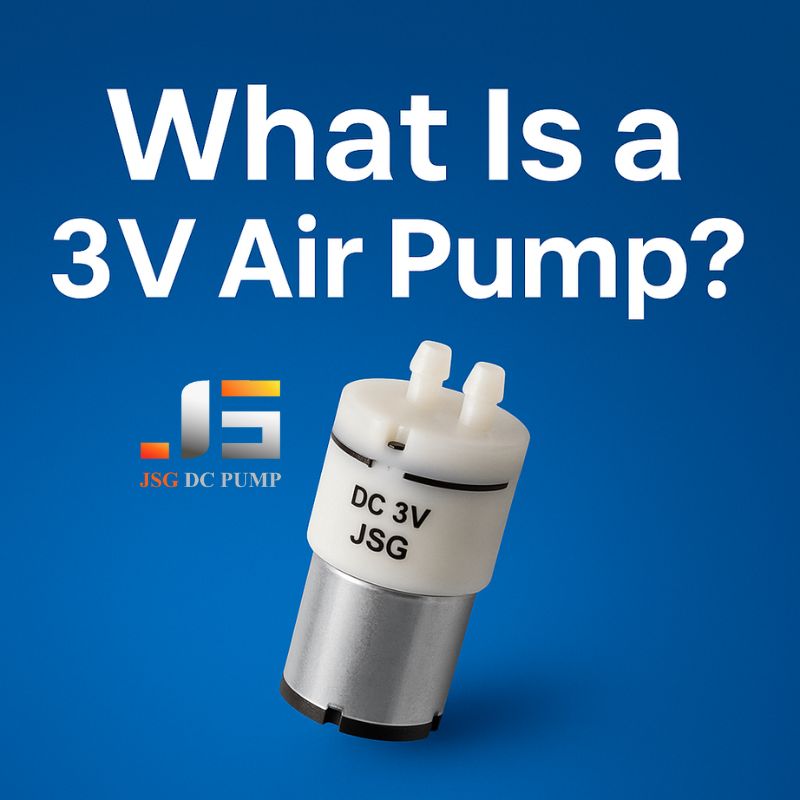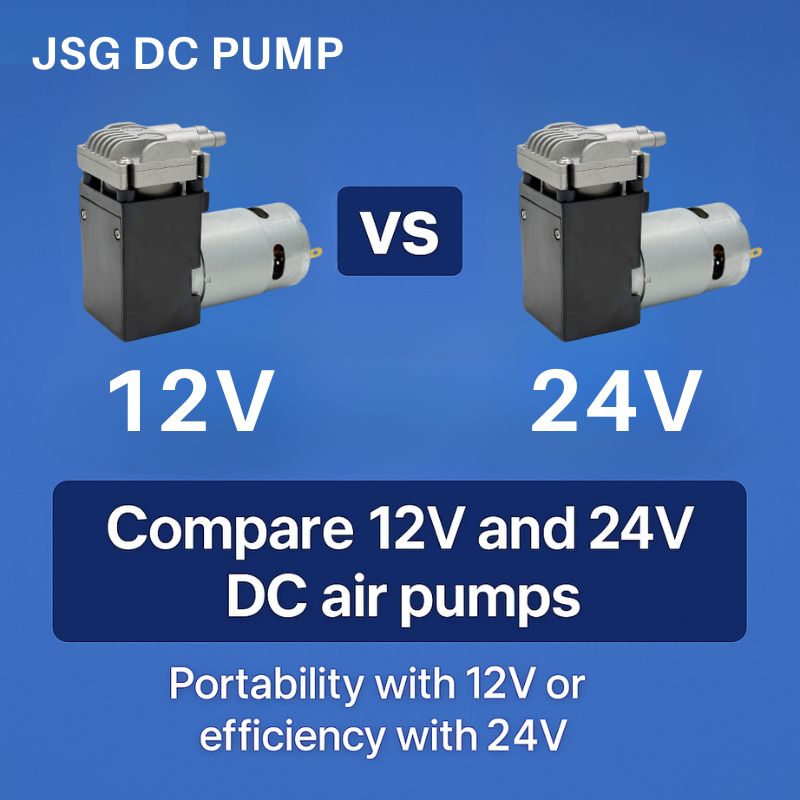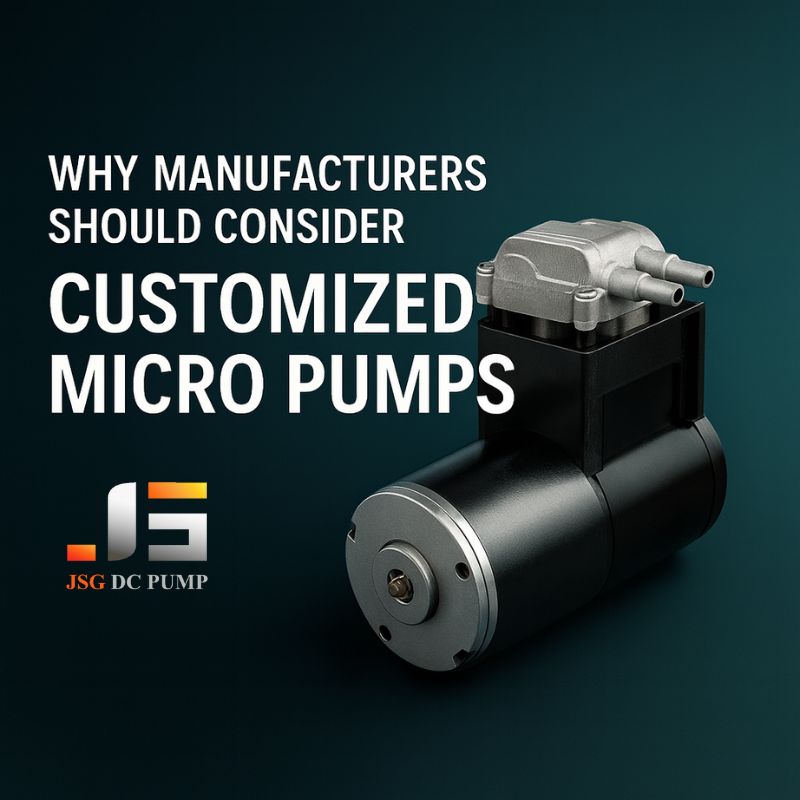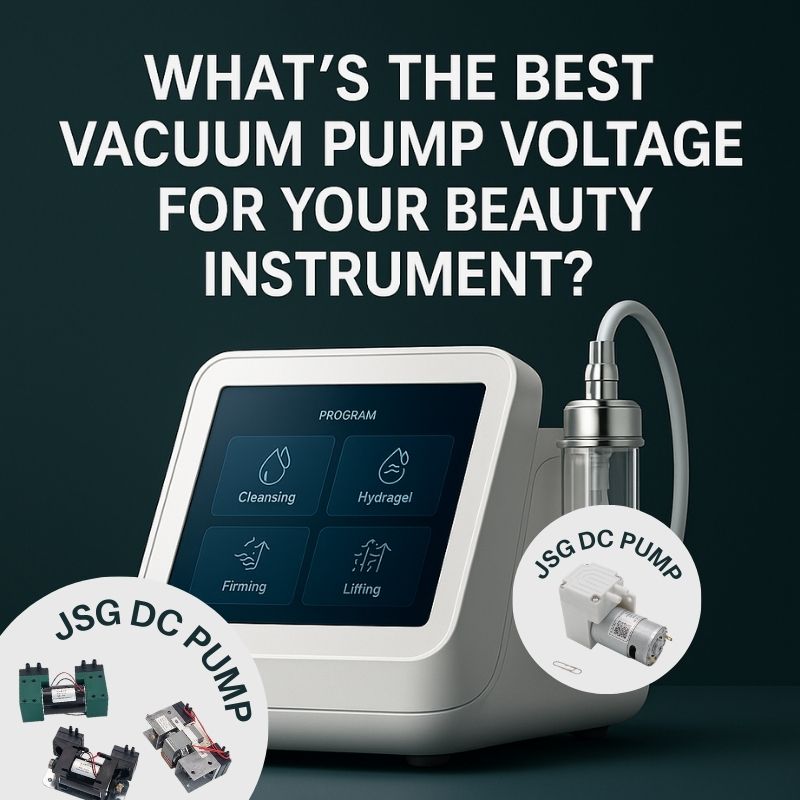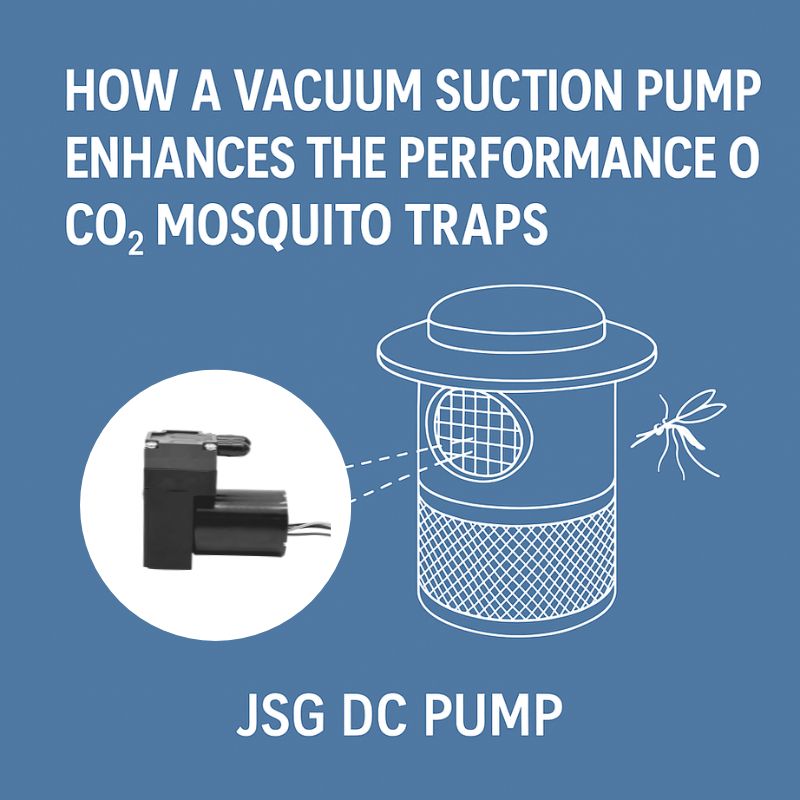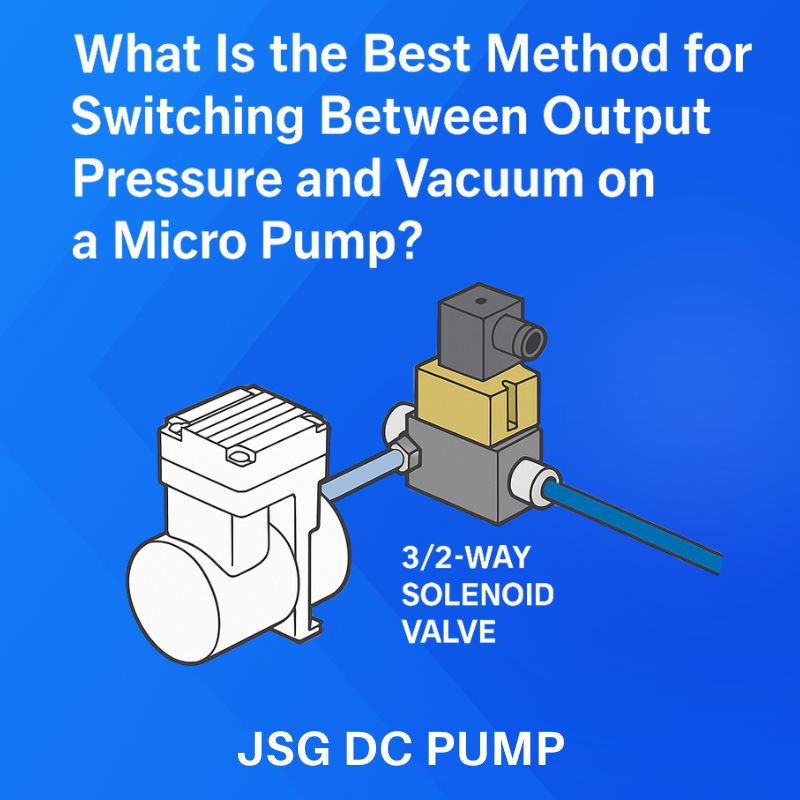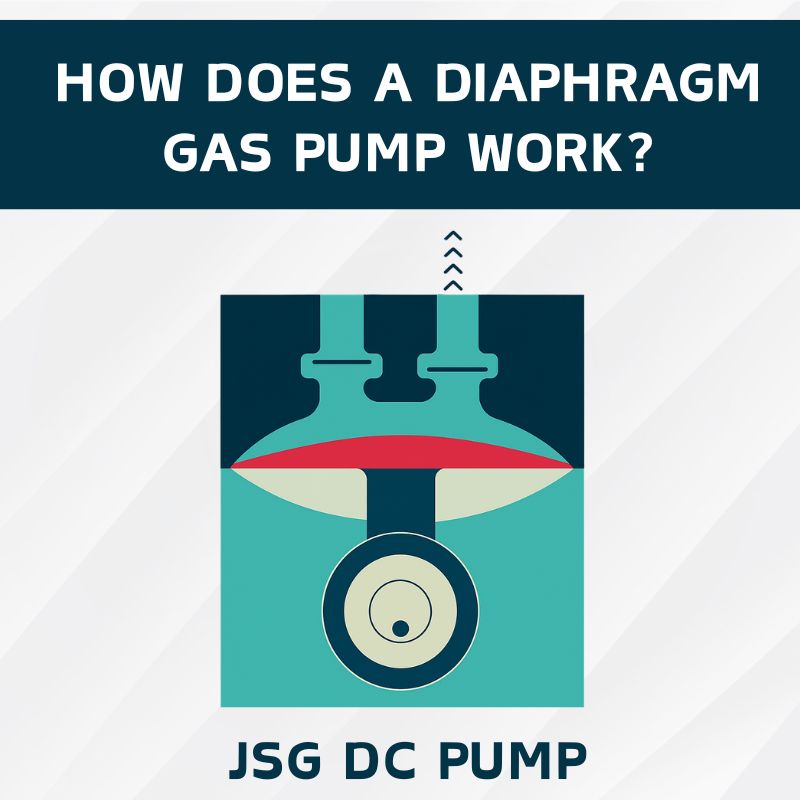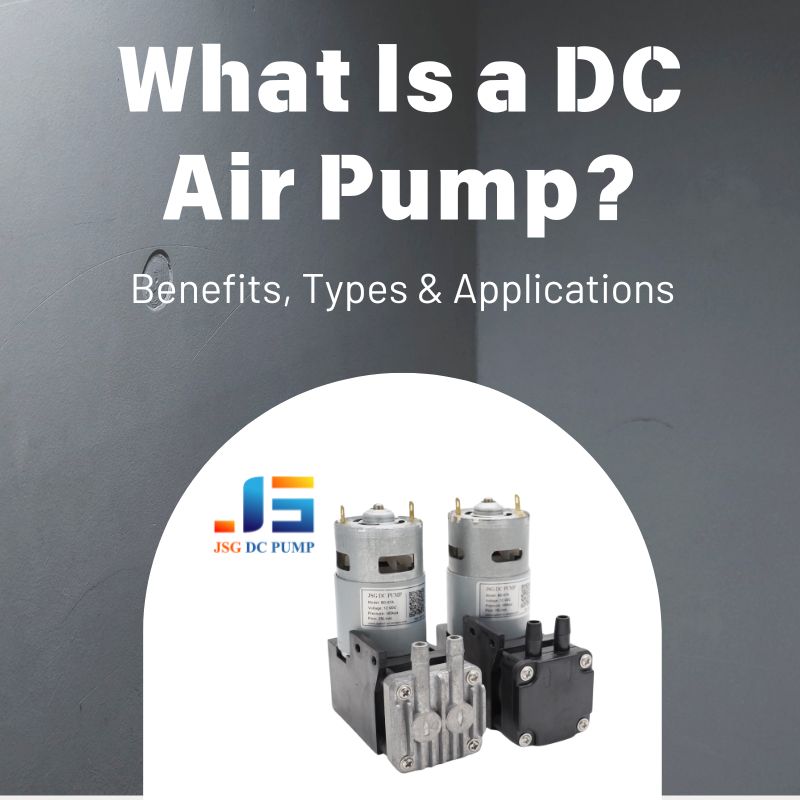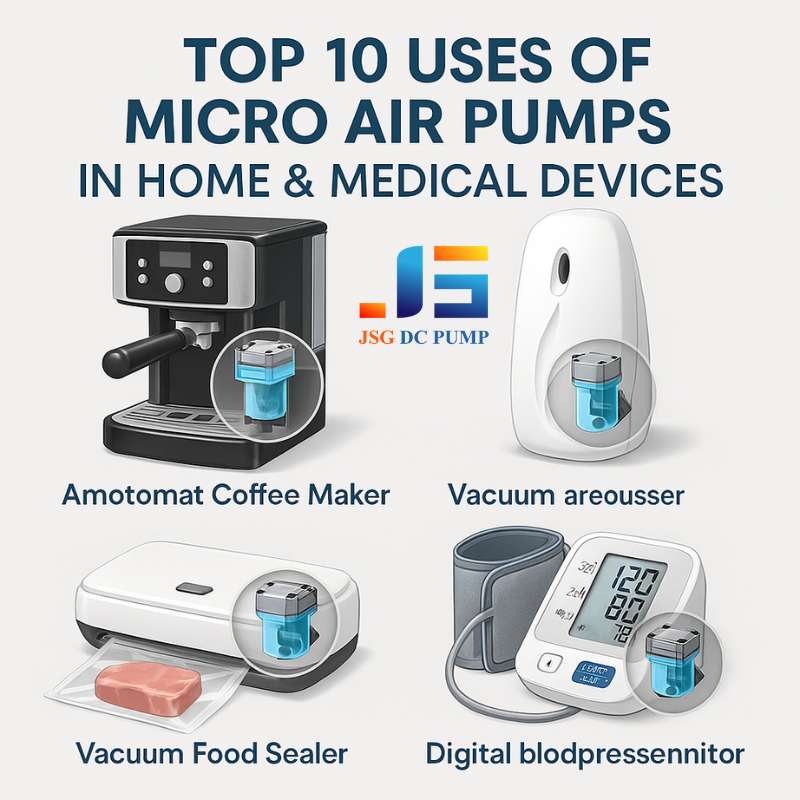You’re designing a compact, battery-powered device and need to add air pressure or vacuum. Standard pumps are too large and power-hungry, threatening your product’s portability and battery life.
A 3V air pump is an ultra-low-voltage DC pump designed for small, portable applications. Its key advantages are minimal power consumption, compatibility with common batteries (like AA or small Li-ion cells), and inherent safety, making it ideal for handheld medical devices, wearables, and compact electronics.

As an engineer at JSG, I’ve seen a growing trend towards miniaturization. Everyone wants their products to be smaller, lighter, and more portable. This is where 3V air pumps have become a secret weapon for many product designers. They are not just scaled-down versions of larger pumps; they are specifically engineered to solve the unique challenges of creating airflow in tight spaces with limited power. Let’s dive into why these tiny powerhouses are becoming so essential.
Why Do Engineers Choose Such a Low Voltage Pump?
You need to integrate air pressure into a wearable or handheld device. Higher voltages require larger, heavier batteries and introduce more complex safety considerations, compromising your design goals.
Engineers choose 3V air pumps for their low power consumption, inherent safety, and compact size. This makes them perfect for battery-operated products where space is limited and efficiency is critical, such as portable medical devices or consumer gadgets.

When I consult with engineers, the decision to use a 3V pump almost always comes down to three practical benefits that are critical for modern product design. It’s not just about the voltage; it’s about what that low voltage enables. First, the extremely low power draw extends battery life, a major selling point for any portable product. Second, the 3V level is considered intrinsically safe, which simplifies certification for devices that come into contact with the user’s skin. Finally, the low voltage allows for a smaller motor design, which translates directly to a smaller overall pump footprint. This is invaluable when every millimeter counts.
Key Engineering Advantages
- Low Power and Safety: Operating at 3V falls squarely in the “Safety Extra-Low Voltage” (SELV) range. This is especially important for wearable technology and medical devices. It allows for simpler, lighter power systems using common batteries like coin cells, AAs, or small single-cell Li-ion batteries.
- Compact Physical Design: A lower voltage requirement allows for smaller motor windings and components. This is a primary reason why 3V pumps can be made so incredibly small, enabling product designers to create sleeker, more ergonomic, and truly pocket-sized devices.
- OEM/ODM Cost-Effectiveness: For high-volume production, these advantages create a domino effect of cost savings. Smaller batteries, simpler power circuits, and less material in the pump itself can reduce the total bill of materials (BOM) for the final product, making it more competitive.
What Are the Common Applications of 3V Air Pumps?
You’re brainstorming new product ideas but are unsure where a tiny pump could fit. You need to see real-world examples to understand their potential and versatility.
3V air pumps excel in applications requiring gentle airflow or suction in a compact, portable form factor. Common uses include inflating cuffs in blood pressure monitors, providing aeration in mini aquariums, and powering handheld gas samplers.

The beauty of these little pumps is their versatility. I’ve personally worked with clients who have used them in everything from high-tech medical devices to innovative consumer gadgets. The low voltage and small size open up possibilities that would be impossible with larger, more powerful pumps. It allows designers to add pneumatic functions to products that were previously purely electronic. Over the years, I’ve seen them integrated into an amazing range of products.
Here’s a table of common applications where our 3V pumps have been successfully deployed.
| Application Category | Specific Use Case | Why a 3V Pump is Ideal |
|---|---|---|
| Medical & Health | Portable Blood Pressure Monitors | Compact size for portability, low noise for patient comfort. |
| Eye Care & Massage Devices | Gentle, controllable pressure cycles; safe low voltage. | |
| Consumer & Hobby | Mini Aquarium Oxygen Pumps | Quiet operation, low power draw for continuous use. |
| Wine Preservation Systems | Creates a reliable vacuum with minimal power from batteries. | |
| Industrial & Lab | Handheld Gas Sampling Devices | Lightweight and portable for field use, precise sampling. |
| Robotic Arm Vacuum Grippers | Enables small-scale automation with minimal power and weight. |
What Technical Factors Should You Consider Before Selection?
You’ve decided a 3V pump is right for your project, but you see many models. Choosing the wrong one could lead to poor performance, noise issues, or premature failure.
Beyond voltage, you must evaluate the pump’s flow rate, pressure/vacuum level, noise, and expected service life. Also, ensure the diaphragm material (like EPDM or FKM) is compatible with the gas or fluid you are pumping.

Selecting the right micro pump is a balancing act. As a pump specialist, I guide clients through a checklist to ensure they get the perfect fit. A common mistake is to focus only on maximum pressure. For example, in a medical device, noise level and a long service life might be far more important. A pump designed for high pressure might be too loud, while one designed for quiet operation might not meet the flow rate needs of a gas detector. You have to consider the system as a whole.
Key Selection Criteria:
- Performance Specs: What are your minimum required flow rate (L/min) and pressure (kPa) or vacuum level (-kPa)? This is the first filter.
- Noise and Vibration: How important is quiet operation? For a medical device used near a patient, low dB is critical. We can integrate noise-dampening solutions.
- Service Life & Duty Cycle: Will the pump run continuously (100% duty cycle) or intermittently? This choice heavily influences the motor type (brushed vs. brushless) and the expected lifespan.
- Material Compatibility: The standard diaphragm material is EPDM, which is great for air. But if you are pumping gases with ozone or other chemicals, you may need a more resistant material like FKM. This is a detail that prevents future failures.
Which Battery Is Best For Your 3V Air Pump?
You have your pump, but now you need to power it. Choosing the wrong battery can lead to short runtimes, unexpected shutdowns, or a bulky final product that misses the mark.
The best battery is a trade-off between energy density, current output, and cost. For high performance and rechargeability, use Lithium-ion (Li-ion). For low-cost, disposable applications, use Alkaline cells (like two AAs), but ensure they can handle the pump’s startup current.

The most critical factor engineers often overlook is the pump’s startup or “inrush” current. A motor requires a brief surge of high current to start spinning, which can be 2-3 times its normal running current. Your battery must be able to supply this peak current without its voltage dropping too low. Lithium-ion batteries excel here, as they have a high discharge rate and a stable voltage. Alkaline batteries have higher internal resistance, and their voltage can sag under a heavy load, potentially causing the pump to stall on startup. Always check the pump’s datasheet for both rated current and max/stall current, then compare that to your battery’s maximum discharge specification.
| Battery Type | Pros | Cons | Best Use Case |
|---|---|---|---|
| Lithium-ion / Li-Po | High energy density, lightweight, rechargeable, high current output | Higher cost, requires protection circuit | High-performance, rechargeable devices (medical, premium electronics) |
| Alkaline (AA/AAA) | Low cost, widely available, easy to replace | Lower energy density, not rechargeable, high internal resistance | Low-cost, disposable or intermittent-use consumer products |
| NiMH (Rechargeable) | Rechargeable, better current output than alkaline, affordable | Lower energy density than Li-ion, self-discharge | A good middle-ground for rechargeable consumer devices |
Brushed vs. Brushless: Which Motor Is Best for Your 3V Pump?
You’re looking at datasheets and see options for brushed or brushless motors. The price difference is clear, but the long-term performance impact on your product isn’t.
Choose a cost-effective brushed motor for products with intermittent use or a shorter lifespan. Select a premium brushless motor for devices requiring very long life, continuous operation, or precise speed control, as they have no parts that wear out.

This is one of the most important decisions you’ll make, as it directly impacts your product’s reliability and cost. A brushed motor uses physical carbon brushes to make electrical contact with the spinning rotor. These brushes wear down over time, limiting the motor’s lifespan. A brushless motor uses electronics instead of brushes, resulting in a significantly longer operational life and better efficiency. As a rule, I tell engineers to match the motor to the product’s intended life and use pattern. It’s about paying for the performance you actually need.
| Feature | Brushed Motor | Brushless Motor |
|---|---|---|
| Lifespan | Limited (e.g., hundreds of hours) | Very Long (e.g., thousands of hours) |
| Cost | Lower initial cost | Higher initial cost |
| Electrical Noise (EMI) | Higher, due to sparking at the brushes | Very low, no sparking |
| Control Precision | Basic on/off and simple voltage control | Precise speed control via PWM signal |
| Ideal Use Case | Intermittent use, disposable products | Continuous operation, long-life medical devices |
How Can JSG DC PUMP Provide a 3V Air Pump Solution?
You need more than just an off-the-shelf pump. Your project has unique requirements for size, noise, or performance that standard models just don’t meet.
At JSG DC PUMP, we specialize in OEM/ODM solutions. We can customize a 3V pump’s flow, pressure, noise level, materials, and motor type to create a unique solution that perfectly fits your application.
This is where my team and I add the most value. A “standard” pump is just a starting point. A recent client was developing a portable environmental gas sampler. They needed a pump that was not only small and power-efficient but also extremely quiet and had a specific vacuum level to avoid damaging the sensor. We worked with them to develop a custom solution. We selected a brushless motor for long field life, adjusted the internal chamber to hit their exact vacuum target, and used a specific diaphragm material for chemical resistance. This level of customization turned their prototype from a concept into a market-ready product. This is what we do every day. We don’t just sell pumps; we partner with you to solve your engineering challenges.
Our Customization Capabilities:
- Performance Tuning: We can adjust motor speed and stroke to fine-tune the flow and pressure.
- Noise & Vibration Reduction: We use custom mounts, enclosures, and motor balancing to achieve very low dB levels.
- Advanced Materials: We offer a range of diaphragm and valve materials (FKM, PTFE) for chemical compatibility.
- Motor Technology: We provide options for coreless or brushless motors for applications requiring ultra-long life or precise control.
Conclusion
3V air pumps deliver impressive performance in a tiny, energy-efficient package. They are the key to unlocking the next generation of portable and wearable technology, proving that small voltage can indeed yield big performance.
At JSG DC PUMP, we specialize in custom OEM/ODM micro pump solutions designed to fit your exact needs — from medical devices and consumer appliances to industrial automation.
📩 Contact us today at admin@dc-pump.com to discuss how we can support your next project with reliable, customized 3V air pump solutions.


